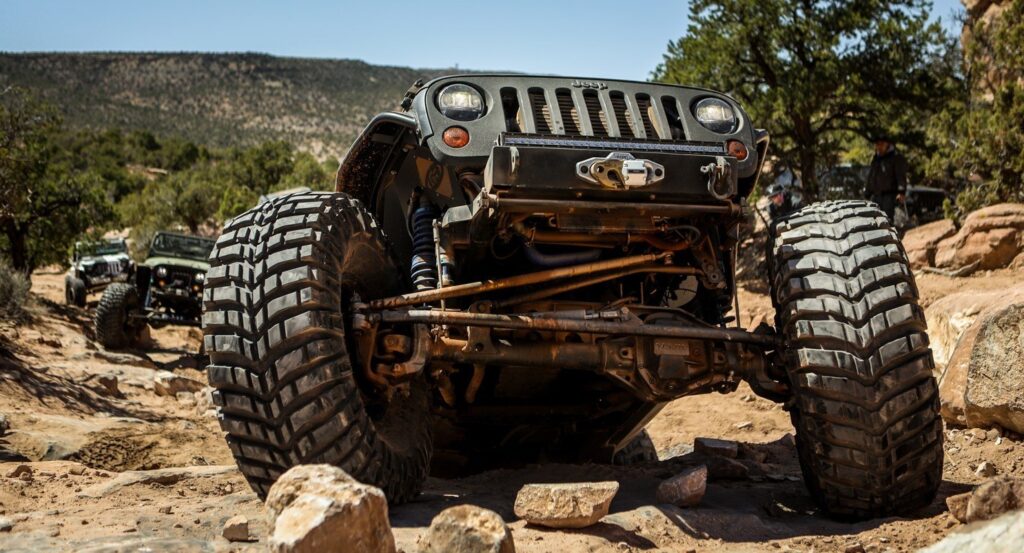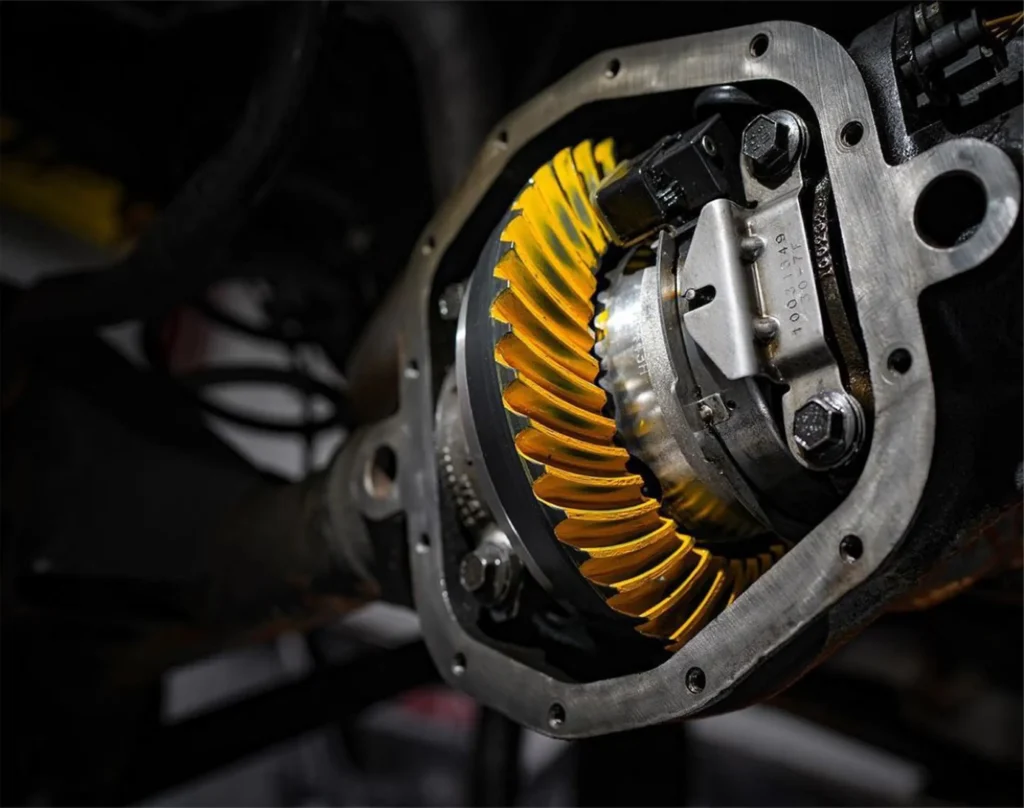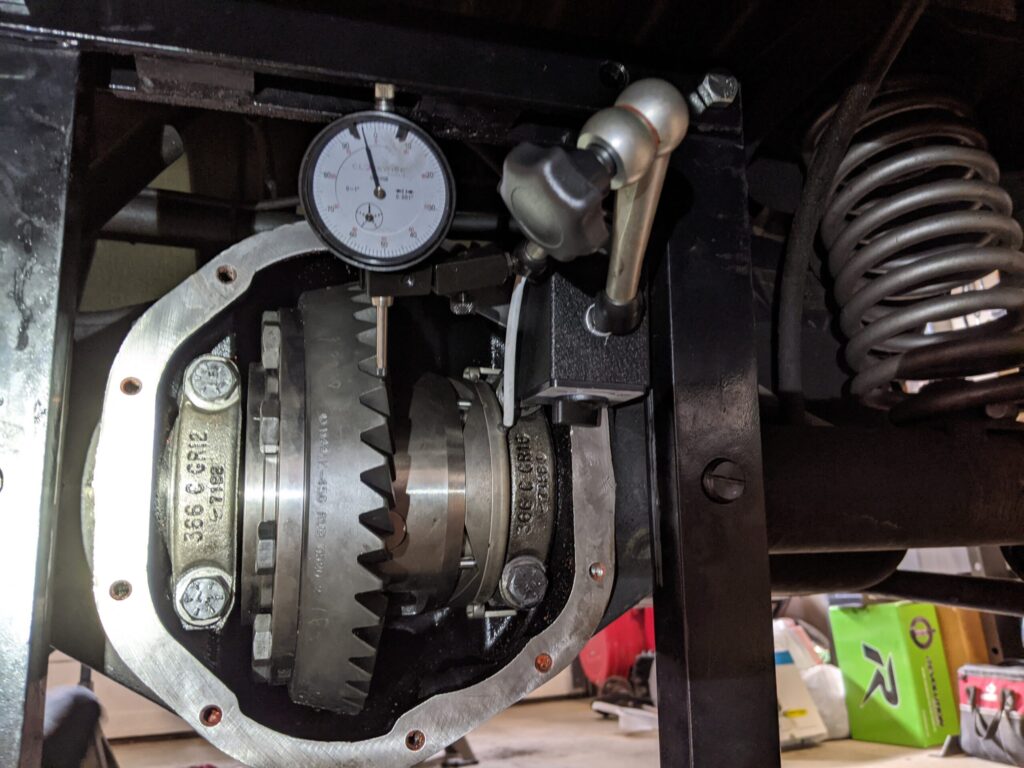Regearing your Jeep is important for restoring performance after changes like larger tires or heavy modifications.
Regearing a Jeep typically costs between $1,500 and $2,350, depending on the model and parts required. The average cost for a Jeep Wrangler is around $1,800. Prices may vary with different axle types and modifications.
This guide covers everything you need to know about regearing your Jeep.
What Is Regearing?
1. Definition And Purpose
Regearing aims to match your Jeep’s gears to its new setup. Larger tires or heavy modifications can throw off balance, and regearing fixes this to bring back performance, efficiency, and proper drivability.
2. Common Scenarios For Regearing
You should regear when adding bigger tires, upgrading to a heavy-duty off-road setup, or hauling heavy loads. These changes make your Jeep work harder, so regearing helps it operate properly and avoid extra wear and tear.
Importance Of Regearing A Jeep
Regearing is important to keep your Jeep performing its best. It helps restore lost power, keeps fuel consumption in check, and ensures smooth rides. Your Jeep may struggle without regearing, especially when tackling rough terrains or long drives.
Overview Of The Costs Involved
The regearing cost varies, typically from $1,000 to $3,000, depending on parts, labor, and your Jeep’s model. While it’s not cheap, it’s a worthwhile investment for long-term performance and reliability.
Why Should You Regear Your Jeep?

1. Impact Of Larger Tires On Performance
Larger tires look cool but can slow your Jeep down. Regearing restores lost power, helping your Jeep accelerate easily.
2. Restoring Optimal Gear Ratios
Regearing adjusts the gear ratio, ensuring power is well-distributed to the wheels, making driving smoother and reducing engine strain.
3. Enhancing Fuel Efficiency
Without regearing, your Jeep uses more fuel. Proper gear ratios improve fuel efficiency, saving you money while driving long-term.
Factors Affecting The Cost Of Regearing
1. Jeep Model And Make
The Jeep model affects the cost of regearing. Due to its build, a Wrangler may cost more than a Cherokee.
2. Type Of Differential Gears
- High-Performance Gears: Cost more than standard gears due to enhanced durability and design for tough conditions.
- Specialised Gears: Custom gears for extreme off-roading can be pricier due to their advanced features.
- Premium Parts: Expect additional costs for top-notch upgrades designed for high-performance and off-road use.
3. Labor Costs
Labor costs vary based on hourly rates, which differ between shops. A skilled mechanic’s time and expertise are essential, making labor one of the bigger expenses when regearing your Jeep.
4. Geographic Location
Your location matters! Urban areas or high-demand regions usually have pricier labor rates, while rural areas might offer more affordable options. This significantly affects the overall cost of regearing.
Read More: Jeep Compass Remote Start Not Working – How To Fix It 2025!
Parts Costs For Regearing
1. Ring And Pinion Sets
These are the main components of regearing. Depending on the brand and quality, a ring and pinion set costs between $250 and $500 per axle, making it a key part of your budget.
2. Differential Carriers
If your Jeep’s setup requires new differential carriers, they’ll cost around $100–$300. These carriers help ensure the new gears work smoothly and fit perfectly with your differential.
3. Installation Kits
Installation kits include all the small parts needed for proper assembly, such as seals and bearings. They typically cost $100–$200 and ensure everything fits tightly and operates efficiently.
Labor Costs For Regearing

1. Average Hourly Rates
Depending on their experience and location, mechanics charge $75- $150 per hour for regearing. Skilled mechanics ensure the job is done right.
2. Time Required For The Process
Regearing usually takes 4–8 hours per axle, depending on the Jeep and the complexity. More upgrades may increase the time and cost.
Diy Vs. Professional Regearing
1. Pros And Cons Of Diy
DIY regearing can save money, but it’s a challenging job that requires advanced tools and skills. Mistakes can lead to costly repairs, so it’s only recommended if you’re highly experienced with Jeep modifications.
2. Benefits Of Hiring A Professional
- Accuracy: Professionals ensure the job is done right, avoiding errors.
- Expertise: They have the knowledge and tools to handle the job efficiently.
- Time-saving: Professionals complete the job faster, saving you time and frustration.
- Peace of mind: Avoid future issues and ensure your Jeep runs smoothly after regearing.
Cost Breakdown By Jeep Model
1. Jeep Wrangler
Regearing a Jeep Wrangler typically costs $1,200–$2,000. It’s a popular upgrade for off-road enthusiasts seeking better performance with larger tires or heavy mods.
2. Jeep Cherokee
For a Jeep Cherokee, regearing a jeep usually costs $1,000–$1,800. It’s a bit cheaper than the Wrangler but improves driving and efficiency just as much.
3. Jeep Gladiator
The Jeep Gladiator costs between $1,300 and $2,200 to regear. Its heavier build and off-road focus make it more expensive, but the performance boost is worthwhile.
Additional Costs To Consider
1. Upgrades To Axles
Upgrading axles can cost $500–$2,000. Stronger axles help your Jeep handle tough off-road conditions and support larger tires.
2. Adding Lockers
Lockers improve traction and cost $800–$1,500. They lock the axles for more power, helping you navigate slippery terrains more effectively.
3. Maintenance And Calibration
After regearing, maintenance and calibration cost $200–$500. Regular checks ensure everything runs smoothly, improving your Jeep’s performance.
Also Read: Jeep 3.8 Oil Type – The Ultimate Guide to Engine Maintenance
How To Save Money On Regearing

1. Shopping For Deals On Parts
Look for discounts or sales on parts like gears and installation kits. Online retailers or local shops often offer great deals, allowing you to reduce the cost of regearing.
2. Bundling Services
Some mechanics offer bundled deals for regearing and other services. If you need additional repairs, bundling them together can save you much money in labor and parts.
3. Finding A Trusted Mechanic
Finding a reliable mechanic ensures you get the best price and quality for the job. Trusted professionals will avoid overcharging and offer fair rates while doing the job right.
Is Regearing Worth The Investment?
1. Long-Term Benefits Of Regearing
Regearing improves your Jeep’s performance, fuel efficiency, and handling, especially with larger tires. In the long run, it enhances driving comfort and ensures your Jeep lasts longer without additional repairs.
2. Potential Cost Savings
Although regearing costs upfront, it helps save money over time by improving fuel efficiency and reducing wear on the engine and drivetrain. Proper gearing also reduces costly repairs in the future.
Common Mistakes To Avoid
1. Skipping Proper Research
Don’t skip research before regearing. Choosing the wrong gears or not understanding your Jeep’s needs can lead to poor performance or unnecessary repairs later.
2. Using Incompatible Parts
Using the wrong parts can damage your Jeep. Always choose parts that fit your Jeep’s specifications to avoid expensive repairs.
Signs That Your Jeep Needs Regearing
1. Reduced Acceleration
Reduced acceleration could mean it’s time for regearing. Larger tires or mods can slow your Jeep, and regearing restores power.
2. High RPMs At Highway Speeds
If your Jeep runs at high RPMs, it might need regearing. This helps improve efficiency, comfort, and fuel economy at higher speeds.
Maintaining Your Jeep After Regearing
1. Routine Inspections
After regearing, it’s important to schedule regular inspections. Checking for signs of wear, oil leaks, and gear performance ensures that your new gears stay in good condition and your Jeep stays reliable.
2. Proper Break-In Procedures
Regearing requires a gentle break-in. Drive carefully for 500 miles to help the gears settle and avoid premature wear.
Final Thoughts
1. Summary Of Key Points
Regearing improves performance, restores power, and enhances fuel efficiency after modifications like bigger tires. While it’s an investment, it’s essential for getting the best out of your Jeep, especially for off-roading or heavy use.
2. Encouragement To Consult A Professional

Regearing can be complex, so it’s best to consult a professional. A skilled mechanic ensures the job is done correctly, saving time and preventing costly mistakes.
How Much Does Regearing A Jeep Cost Near Me
The cost of regearing varies by location, but typically, you’ll spend between $1,000 and $3,000. Contact local shops for quotes based on your Jeep’s model and the parts needed.
How Much Does Regearing A Jeep Cost 2022
In 2022, the average cost for regearing a Jeep was about $1,200–$2,500, depending on the model, parts, and labor costs. Prices fluctuate based on market conditions and geographic location.
How Much Does Regearing A Jeep Cost 2021
In 2021, regearing typically costs around $1,000–$2,300, based on the Jeep model and the complexity of the work. Factors like part quality and labor rates impacted the final cost.
Jeep Regearing Near Me
To find Jeep regearing services near you, check online for reviews or ask local off-road communities. Look for trusted mechanics with experience working on Jeep models to ensure high-quality results.
How Much Does It Cost To Regear A Jeep TJ
Regearing a Jeep TJ usually costs between $1,200 and $2,000, depending on the gear set and labor. Upgrades to axles or additional services may increase the cost.
Jeep Regear Chart
A Jeep regear chart helps you choose the right gear ratio based on tire size and the Jeep model. It ensures you pick the correct gears to optimise performance and efficiency for your specific setup.
How Much Does It Cost To Regear A Jeep Gladiator
Regearing a Jeep Gladiator typically costs $1,300–$2,200, with pricing influenced by the model, parts, and labor required. For off-road enthusiasts, it’s a worthwhile investment for optimal performance.
Jeep Jk Regear For 35s
Regearing a Jeep JK for 35-inch tires can cost between $1,500 and $2,500. Larger tires require a higher gear ratio to restore power and efficiency, especially for off-roading or heavy-duty use.
Must Read: How To Measure Lift On Jeep JK – Step-by-Step Guide 2025!
FAQs
1. Do I Need To Regear My Jeep With 33s?
If you add 33-inch tires, regearing may be necessary to restore power and acceleration. It helps your Jeep perform better, especially off-road.
2. What Is The Best Gear Ratio For A Jeep JL With 35s?
A 4.56 or 4.88 gear ratio is recommended for 35-inch tires on a Jeep JL to balance power, acceleration, and fuel efficiency.
3. How Long Do Jeep Jk Transmissions Last?
Jeep JK transmissions typically last 100,000 to 150,000 miles with proper maintenance. Regular fluid changes extend the lifespan significantly.
4. How Much Is Lifting A Jeep?
Lifting a Jeep costs around $400 to $3,000, depending on lift height and components like shocks, springs, and labor.
5. How Much Does It Cost To Put In A Rebuilt Transmission?
Installing a rebuilt transmission in a Jeep usually costs $1,500 to $3,500, depending on the model and labor involved.
6. What Is Considered High Mileage For A Jeep Wrangler?
A Jeep Wrangler with over 150,000 miles is considered high mileage. With good maintenance, it can last much longer.
7. How Much Does A New Jeep Wrangler Transmission Cost?
Depending on the model, a new Jeep Wrangler transmission can cost between $3,000 and $5,000, including parts and labor.
8. How Many Miles Will A Jeep 3.6 Engine Last?
A Jeep 3.6 engine can last around 200,000 to 300,000 miles with regular maintenance and proper care.
9. Is It Cheaper To Rebuild Or Replace A Transmission?
Rebuilding a transmission is usually cheaper than replacing it, costing around $1,000 to $2,500, depending on the condition.
10. What Is The Most Common Cause Of Transmission Failure?
Low or dirty transmission fluid is the most common cause of transmission failure, leading to overheating and damaged components.
Conclusion
In conclusion, regearing your Jeep is essential for maintaining performance, fuel efficiency, and drivability, especially after modifications. It’s a valuable investment for long-term reliability and off-road capability. Consult a professional to ensure a smooth, reliable regear.






0 Comments